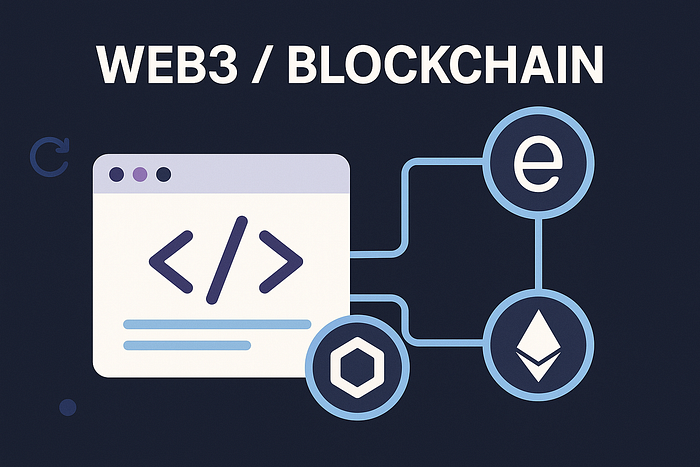Web3 Frontend Integrations: the Universal Concepts Across Blockchains

Whilst the various chains in Web3 are their own individual technologies and have their distinct characteristics, there are some conceptual commonalities across many of them, particularly in relation to integrations with frontends.
Across chains such as VeChain, Ethereum and Solana, integrations remain similar: wallets, transactions and ownership. For each of these, the challenges are consistent: a human layer must present and clarify the decentralised web in a way that reduces complexities; educates users; and mitigates risks and costs.
Below is an overview of these core and common concepts.
Wallet Integrations
Wallets are a fundamental part of any blockchain application. In Web2, their closest equivalent would be user accounts. However, they contrast from each other in essential ways.
A wallet manages a private key and public address in order to enable access to data on a chain. To access this data, a user needs to connect to a wallet. In the case of VeChain, this is VeWorld. In Ethereum’s case, it is Metamask. And in Solana’s case, it may be Phantom. However, across each of these, the flow is consistent:
- Detect the wallet
- Connect to the wallet
- Retrieve public address
- Authenticate with signatures
For each chain, there is typically a library available which enables this flow. VeChain provides dApp Kit. For Ethereum, ethers.js is typically used. And for Solana, engineers would typically use web3.js and wallet-adapter.
When integrating these, the challenge for engineers and product designers is often to abstract any complexities in order to simplify the experience for users and keep it as seamless as possible.
Transaction Life-Cycle
Across blockchains, the life-cycle of a transaction is essentially the same and can be summed up as follows:
- Inside of the wallet, the user signs a transaction.
- The transaction is then broadcast to the network.
- There is a wait for the transaction to be included in the block.
- The result is either confirmed or failed.
The above steps usually take place with a wallet and can take any amount of time to complete: from seconds to minutes. Given that there is no definitive time, engineers must always ensure to accurately communicate transaction states and outcomes to the user, in order to avoid confusion and frustration on their part.
Any associated fees with transactions should always be shown to the user.
Transaction Costs
In Web3, on-chain transactions run on gas. This means that fees are charged for every state-changing operation, regardless of outcomes.
- In VeChain, the cost is in VTHO.
- In Ethereum, it is ETH.
- And in Solana, it is in lamports.
Because of these costs, it is important for users to have a good understanding of how they work and for the UI to always show these where appropriate.
Error Handling
Taking into account the point above regarding transaction costs, it is important that users are aware of errors and of the reasons for errors, in order to prevent unnecessary further costs (failed transactions also cost gas). In VeChain, its dual-token model (VET plus VTHO) makes fees more predictable than on other chains.
Therefore, engineers must always ensure to educate users on failures and the reasons for these, where possible.
Exposing Data On-Chain
Across all blockchains, similar data needs to be exposed to the user. This includes:
- Balances
- Token Lists
- NFT Metadata
- Transaction Histories
To retrieve these:
- VeChain uses its dApp Kit
- Ethereum uses RPC or indexers such as The Graph
- Solana uses RPC or Helius.
Since users will make crucial and costly decisions based upon this retrieved data, it is vital that it is always accurate and up-to-date. Therefore engineers must always ensure excellent performance and consider methods of retrieving it carefully (e.g. WebSockets vs Polling).
Note that exposing data does not cost gas, as it is read-only.
Indexers
Blockchains are suitable for providing raw data with RPC endpoints. In order to query more rich data, these are not suitable. Instead, an off-chain service called an indexer is used to expose responses to more complex queries (for example, in order to build interesting and useful dashboards in the UI). There are several indexers available within different blockchains. However, some of the more common are:
- VeChainStats (for VeChain)
- The Graph (for Ethereum)
- Helius (for Solana)
Conclusion
The world of Web3 is enormously exciting, with much untapped potential. Riding upon this wave is a growing number of fascinating blockchains, each with its own set of values and innovations. However, it is vital to understand the fundamental concepts that form a common thread through each of these, in order to be better equipped to assess and integrate with them.
Understanding these concepts will go a long way in helping engineers to more quickly integrate and familiarise themselves with the various chains, and ultimately to innovate upon them further.
Listen To The Article

Black Friday 30%
Offer









